#campo Viejo rioja blanco
Explore tagged Tumblr posts
Text
Campo Viejo Rioja Blanco Review (Episode 411)
youtube
View On WordPress
#Beginners Wine Tasting Course#campo Viejo rioja blanco#campo viejo rioja wine review#great value wines#How to taste Wine#Mouthfeel#rioja wine region#Spanish White wine#Spanish Wine#spanish wine tasting#Tannins#White Rioja#White Rioja wine#White Wine#Wine#Wine Basics#Wine for begginers#wine reviews and tasting#wine reviews uk#Wine Tasting#Wine Tasting 101#Wine Tasting Course#Wine Texture#Youtube
0 notes
Photo

047 - DICCIONARIO DE ENOLOGÍA.
BODEGAS LA RIOJA ALTA. Productor de la Rioja, España, fundada en 1890, esta bodega produce casi 2 millones de excelentes botellas al año. La uva procede de sus viñas (300 ha) y de viticultores locales. Una parte de la fermentación se hace en cubas de madera y el método de crianza es convencional (40,000 barricas), por lo que es considerada una de las mejores bodegas de La Rioja. Sus más distinguidas marcas son: Viña Ardanza (blanco, tinto), Reserva 904 (tinto), Reserva 890 (tinto), Viña Alberdi (tinto) y Viña Arana (tinto).
BODEGAS LA RURAL, MENDOZA - ARGENTINA. Interesantísima bodega Argentina. Fue fundada por la familia Rutini, que ya elaboraban vinos en Italia a principios del siglo pasado. El único hijo, Felipe Rutini, decidió trasladarse a América y continuar la tradición vitivinícola. Se estableció en el Departamento de Maipú, Mendoza, donde plantó las vides. A fines de 1885 inició la construcción de la bodega, que llamó La Rural. Su lema era “Labor et perserverantia”. Su principal objetivo difería de la mayoría de sus competidores: calidad sobre cantidad. Don Felipe continuó con sus plantaciones en Maipú, extendiéndose con uvas finas de Cabernet, Merlot, Syrah y Chardonnay. Él murió en 1919, pero dejó en sus descendientes los principales que los habían guiado. Hoy en día La Rural cuenta con todos los equipos de una bodega de última generación y sus vides tienen una edad ideal. Ya hace tiempo que están exportando hacia Inglaterra, Estados Unidos y Holanda.
BODEGAS LAN. Productor de la Rioja, España, fundada en 1974, posee un viñedo de sólo 70 ha , por lo que compra el 90% de la uva que necesita. Cada año produce 2,5 millones de botellas de un buen nivel de calidad. Sus cavas acogen 14,000 barricas de roble y más destacadas marcas son: Lan (blanco, rosado, tinto) y Viña Lanciano (tinto).
BODEGAS LOS CURROS. Bodega Española, ubicada en Castilla y León. Compran uvas y utiliza las de sus viñas de 20 ha de superficie. Su principal marca, se comercializa bajo el nombre de Viña Cantosán (blanco), pero también elabora un vino de mesa, hecho a base de tempranillo y de cabernet sauvignon, conocido con el nombre de Illera.
BODEGAS MAGAÑA. Bodega Española, ubicada en Navarra, Barillas. Fue fundada en 1968, es una de las emblemáticas en Navarra. Sus fundadores, fueron los hermanos Magaña, se inclinaron hacia la variedad de merlot, el resultado fue un vino de lujo aunque con un precio relativamente alto. Actualmente producen una amplia gama de tintos, todos con crianza. Sus vinos se comercializan bajo los nombres de Eventum y Viña Magana, todos tintos.
BODEGAS MARQUÉS DE MURRIETA. Productor de la Rioja, España, fundada en 1870 y en la actualidad todavía conserva sus costumbres. La uva con que elabora sus vinos proviene de sus 300 ha de viñas de Ygay, cerca de Logroño. Las vinificaciones se hacen deliberadamente a la antigua, y los vinos se crían en 14,000 barricas (durante más de dos años, bastante más que en otras bodegas). Esta empresa fabrica una gama pequeña de vinos que incluyen el Marqués de Murrieta (blanco y tinto) y el famoso Castillo Ygay (tinto), una reserva de gama alta, raro y caro.
BODEGAS MARQUÉS DEL PUERTO. Productor de la Rioja, España, fundada en 1972, perteneciente al mismo grupo que Campo Viejo; compra la mayor parte de la uva que necesita, pues no posee más que 22 ha de viñas. En 1989 decidieron abandonar los vinos de estilo joven, actualmente posee más de 5,000 barricas de roble, gracias a las cuales ha mejorado mucho la calidad de sus reservas.
BODEGAS MARQUÉS LACUESTA. Productor de la Rioja, España, fundada en 1895, conservador del "viejo estilo". El proceso de fermentación se hace aún en cubas de roble y su producción anual total se cría en un parque de 7,000 barricas de roble aproximadamente. Sus principales marcas son: Campeador (tinto) y Martínez Lacuesta (tinto).
BODEGAS MARTÍNEZ BUJANDA. Productor de la Rioja, España, goza de muy buena fama y trabaja cuidadosamente en la crianza de sus vinos en un parque de más de 13,000 barricas de roble. Es considerado uno de los mejores productores de Rioja. Sus marcas más destacadas son Valdemar (blanco, tinto, rosado), Conde de Valdemar (tinto).
BODEGAS MATARROMERA, RIBERA DEL DUERO – CRIANZA 1998. Viñedo que ha estado produciendo desde la edad media, se ha convertido en una nueva estrella en la Ribera del Duero. Suelos calizos en aluvión y microclima fluvial, los mismos que plantaron los monjes cistercienses, son ahora trabajados con toda la tecnología moderna para obtener los vinos de Matarromera. Desde su primera cosecha en 1994, llamaron poderosamente la atención y obtuvieron innumerables premios y menciones en todas las revistas especializadas. La nueva bodega está ubicada a escasos metros de la mítica finca de Vega Sicilia. La uva de la tierra es la Tinta Fina, variedad local de la Tempranillo, la misma uva que se extiende por la Rioja y por media España. Matarromera está produciendo vinos jóvenes, crianza y reserva, todos de gran calidad. [email protected]
5 notes
·
View notes
Text

Campo Viejo Blanco Fresco 2020. 12,5 % Vol. Bodegas Campo Viejo. D.O.Ca. Rioja. #riojawine #rioja
0 notes
Photo

LAATSTE DAGEN PROMOTIES: Vino Rioja Joven Blanco Campo Viejo 750ml Klik hier om het product te bestellen https://ift.tt/38SR89c
0 notes
Photo
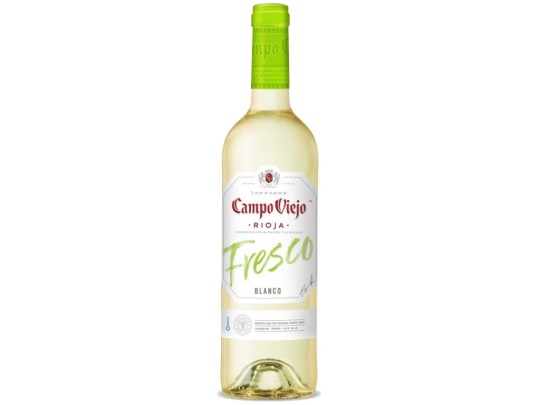
#twitter Vino Rioja Joven Blanco Campo Viejo 750mlLETZTE ANGEBOTSTAGE ! Vino Rioja Joven Blanco Campo Viejo 750ml KLICKEN Sie hier, um das Produkt zu kaufen https://ift.tt/3l71b01
0 notes
Photo
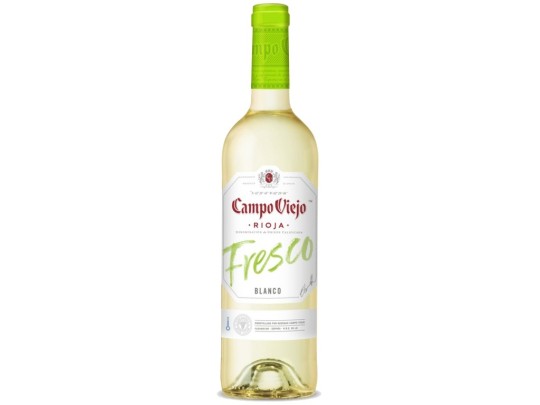
DERNIERS JOURS DE PROMO : Vino Rioja Joven Blanco Campo Viejo 750ml Cliquez Ici pour commander le produit https://ift.tt/3BMgRfY
0 notes
Text
Rioja Guide: The Most Popular wine
Rioja Guide: The Most Popular wine
Learn about the Spanish wines defined by their fruit-forward taste and aging process in the American Oak Cox. In short this is a Spanish wine; you can’t talk about Spanish without rioja. Wine often embodies the culture of the place where it was made. Like Spain’s long cysts and rich flavors, Rioja wines are also vibrant and elegant. Aged in oak barrels for different periods, Rioja’s signature notes include vanilla and caramel flavors in hardwood. For those of us who have slept in high school Spanish, the word qualified means guaranteed. Only two regions in the whole of Spain have achieved such high marks, and one of them is the Rioja Valley. Rioja is the most favorite drink of drinkers, if you want to drink flavor of rioja then not need to go liquor store, you can order from your phone, you just type on goggle search alcohol delivery nearby me, or you want just rioja then you can type rioja delivery nearby me, and sit relax after 30 to 60 min your order will be at your place. Rioja wines can be red, white or rose; they are the most common Rioja deep red, with grapes like tampranilo and garnacha. No matter what type of flavor you buy, you can expect a lot of fruity flavor and high acidity. It goes well with practically anything, so if you haven’t invented this classic viticulture style yet, you can confidently open the bottle at the next dinner party.
What is Rioja Wine
That’s a question we get asked a lot on our wine tours in Seville. Is it a grape? Is it a place? Or is it a special way of making wine? And the answer? "Merciful to all of them!" Rioja can be hard to catch. But we are promise to you it's worth it. This is the most important wine in Spain and one of them is very tasty!
Rioja Valley
Firstly rioja is not a grape, its region of Spanish; it is much champagne should come from France. The characteristics of the region, such as grape varieties, height and climate contribute to the incomparable taste of the product. Rioja wine is divided into three types: Rioja Oriental, Rioja Alta and Rioja Alavesa. After all, Rioja Alavesa wine from the north has a higher acidity than before. In the Rioja region of Spain, wine culture dominates. Every summer, thousands of locals and tourists celebrate La Batalla del Vino - The Wine Fight. Living in Harrow, a city full of vineyards, wine lovers honor the annual tradition by feasting on one another and beating oxen. Beyond the speech of regional varieties, Rioja wines really differ from each other through the barrel-aging process. Categories include young wines, crianza wines, reserve wines and gran reserve wines. Reserve wines are fickle. Made from only the best grapes in the most preferred growing season, the reserve brews wine in oak for at least one year and must be at least three years old. The wine tastes old and less fruity accordingly. Its dense and dusty flavor profile includes dark cherries and smoky, paired well with roasted coke lamb.
Food Pairing with Rioja
If you are looking for the perfect wine to add to the details then look no further! White Rioja is an ideal companion to brown evenings or Spanish food in general. The Young Rioja pairing is great with grilled fish, shellfish, garlic, gazpacho and fresh zesty salad. The old-fashioned Rioja pairing is great with many flavored fish-based foods like grilled fish, grilled hake, paella, fish stew, and lobster. In addition to fish-based pairings, Rioja also does well with almonds, serrano, asparagus, grilled meat and strong cheese.
Popular But not Pricy
Gran Reserves, of course, has a high price to start at around $40 per bottle, although you can find good generico and crianza rioja varieties below $ 20 per bottle. Once you get out of the reds with the same oak-aging process, don’t overlook the Blanco and Rose wines from this region. Some of Drinkerrs popular Rioja wines come from the Campo Viejo winery and the Marques de Cos winery. Here are the best-selling Rioja from Drinkerrs. Bota Box Nighthawk Rich Red Wine Blend Campo Viejo Rioja Campo Viejo Reserve Marqués De Cáceres Crianza Rioja Marques De Riscal Reserva Rioja CVNE Cune Crianza Muga Rioja Reserva Unfiltered Marqués De Cáceres Reserva Rioja EI Rioja Rosado Wine lovers may not have explored the Iberian Peninsula’s varieties with the same voracity as Napa Valley, France or Argentina. Rioja’s wines are an easy way to begin exploring Spanish wines comes to fruity, sweeter reds. Add another stamp to your wine passport and discover which Rioja wine is your new favorite one. Even if this drink is a favorite of the Spanish, it is still very popular among the American people and in great demand in the United States of America.
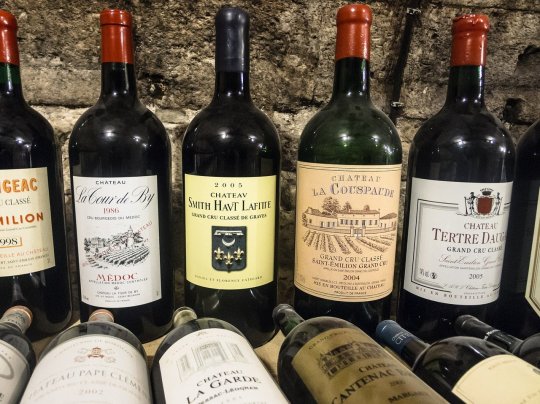
0 notes
Text
Campo Viejo launches Campo Viejo Albariño in UK
Campo Viejo Albariño offers a new, exciting alternative trade-up for consumers and caters to the growing demand for light and fresh styles
Campo Viejo is launching an exciting new premium white wine, Campo Viejo Albariño.
UK consumers will be the first in the world to taste the vibrancy of the deliciously fresh white wine, which originates from the Rías Baixas region, Spain’s most renowned region for the Albariño grape.
Following the success of the brand‘s Tempranillo Blanco, which was launched in the UK in 2016, the new Albariño provides a premium option for consumers looking to further explore expressions of Spanish white wine.
Made 100 percent with Albariño grapes, carefully picked by hand and grown in small family owned plots, the new varietal perfectly captures the authenticity of modern-day Spain, which is at the heart of the brand.
Chris Shead, Off-Trade Channel Director for Pernod Ricard UK, commented: “Until now Campo Viejo has been led by Rioja Tempranillo reds and Viura Tempranillo whites.
“Albariño offers a new, exciting alternative trade-up for consumers and caters to the growing demand for light and fresh styles.”
The Albariño captures the essence of Spain with fragrant, fresh and fruity flavours and lively acidity carrying through until a refreshing and long finish.
Perfectly paired with vegetables, meats, pasta or your favourite appetisers, Campo Viejo Albariño is best enjoyed on a warm summer’s evening.
Campo Viejo is a Pernod Ricard brand.
The article Campo Viejo launches Campo Viejo Albariño in UK appeared first on World Branding Forum.
0 notes
Text
How Rioja wines pair with spicy Indian food
New Post has been published on https://apzweb.com/how-rioja-wines-pair-with-spicy-indian-food/
How Rioja wines pair with spicy Indian food
“This is a whisky drinking region. Like everywhere in India, but especially here.”— Hortense Cabouret, Pernod Ricard’s wine ambassador is well aware of the challenges that come with trying to market alcohol, wine in particular, to a city with complicated liquor licensing.
We meet her at a wine and food pairing luncheon at Barracuda Brew, which claims to be the city’s longest bar. Along with chef Mohamed Siddiq, who is serving up a rich six-course meal, she is showcasing Pernod Ricard’s two main wine brands: Jacob’s Creek from Australia and Campo Viejo from Rioja, Spain. “We are also bringing Jacob’s Creek Double Barrel to Chennai in May,” she informs us, “It is finished in aged whisky barrels so it has more texture.”
While Chennai is quite familiar with Jacob’s Creek, Campo Viejo, which has been available here for two years now, is still new in the minds of the consumer, recognises Hortense. “Which is why it is important for us to take the time to explain the wines to the consumers,” she says.
“Sniff, swirl, savour,” she starts with the basics at Barracuda. Chef Siddiq, who prides himself on creating dishes that are South Indian but tweaked for the global palate, has included Brazilian beef with slow grilled peppers, and prawns baked in the pulp of passion fruit and essence of wasabi. We pair the former with Jacob’s Creek Shiraz and the latter with Campo Viejo Tempranillo Blanco-viura.
Main course includes tomato rice with seer fish, and a Persian roast chicken with paprika scented rice. Both are paired with the Campo Viejo Tempranillo Red. “Campo Viejo flavours are more light,” explains Hortense, “The red is easier to drink especially with Indian dishes. It is not so high in tannin. If there is too much tannin in your wine, you can’t pair it with spicy food common to India. It will burn your mouth.”
The Campo Viejo, she adds, is crafted by an all female winemaking team in Rioja, a flagship wine region in Spain. “Campo Viejo pairs nicely with Southeast Asian dishes like coconut curries, and spicy dishes because it offsets the spiciness of the food.”
On the other hand, we pair the Jacob’s Creek Chardonnay with Chef Siddiq’s mushroom and truffle soup. “It is the kind of wine that will go well with creamy Indian dishes, like palak paneer and butter chicken,” she says.
Explaining wines for an Indian setting has been a major part of Hortense’s work here. “I have noticed that people keep red wines at room temperature. That would have been fine in Europe, but here in India, especially in Tamil Nadu, that makes no sense. They have to be stored at 14 to 16 Celsius degrees max.”
Hortense has been in India for five months now, observing the booming wine market. In Chennai, she has been meeting with the staff at hotels like InterContinental, Crowne Plaza, Holiday Inn, Novotel and so on, during the day, and interacting with consumers during the evenings.
Her main goal is to increase visibility, which is why Sula now being available in TASMACs does not bother her much. “Yes, we are competitors but at the same time, we are from the same wine industry. If they are pushing wine consumption, it helps the whole industry,” she says.
You have reached your limit for free articles this month.
Register to The Hindu for free and get unlimited access for 30 days.
Subscription Benefits Include
Today’s Paper
Find mobile-friendly version of articles from the day’s newspaper in one easy-to-read list.
Unlimited Access
Enjoy reading as many articles as you wish without any limitations.
Personalised recommendations
A select list of articles that match your interests and tastes.
Faster pages
Move smoothly between articles as our pages load instantly.
Dashboard
A one-stop-shop for seeing the latest updates, and managing your preferences.
Briefing
We brief you on the latest and most important developments, three times a day.
Not convinced? Know why you should pay for news.
*Our Digital Subscription plans do not currently include the e-paper ,crossword, iPhone, iPad mobile applications and print. Our plans enhance your reading experience.
Source link
0 notes
Text
Campo Viejo launches Campo Viejo Albariño in UK
Campo Viejo Albariño offers a new, exciting alternative trade-up for consumers and caters to the growing demand for light and fresh styles
Campo Viejo is launching an exciting new premium white wine, Campo Viejo Albariño.
UK consumers will be the first in the world to taste the vibrancy of the deliciously fresh white wine, which originates from the Rías Baixas region, Spain’s most renowned region for the Albariño grape.
Following the success of the brand‘s Tempranillo Blanco, which was launched in the UK in 2016, the new Albariño provides a premium option for consumers looking to further explore expressions of Spanish white wine.
Made 100 percent with Albariño grapes, carefully picked by hand and grown in small family owned plots, the new varietal perfectly captures the authenticity of modern-day Spain, which is at the heart of the brand.
Chris Shead, Off-Trade Channel Director for Pernod Ricard UK, commented: “Until now Campo Viejo has been led by Rioja Tempranillo reds and Viura Tempranillo whites.
“Albariño offers a new, exciting alternative trade-up for consumers and caters to the growing demand for light and fresh styles.”
The Albariño captures the essence of Spain with fragrant, fresh and fruity flavours and lively acidity carrying through until a refreshing and long finish.
Perfectly paired with vegetables, meats, pasta or your favourite appetisers, Campo Viejo Albariño is best enjoyed on a warm summer’s evening.
Campo Viejo is a Pernod Ricard brand.
The article Campo Viejo launches Campo Viejo Albariño in UK appeared first on World Branding Forum.
0 notes
Text
Campo Viejo launches Campo Viejo Albariño in UK
Campo Viejo Albariño offers a new, exciting alternative trade-up for consumers and caters to the growing demand for light and fresh styles
Campo Viejo is launching an exciting new premium white wine, Campo Viejo Albariño.
UK consumers will be the first in the world to taste the vibrancy of the deliciously fresh white wine, which originates from the Rías Baixas region, Spain’s most renowned region for the Albariño grape.
Following the success of the brand‘s Tempranillo Blanco, which was launched in the UK in 2016, the new Albariño provides a premium option for consumers looking to further explore expressions of Spanish white wine.
Made 100 percent with Albariño grapes, carefully picked by hand and grown in small family owned plots, the new varietal perfectly captures the authenticity of modern-day Spain, which is at the heart of the brand.
Chris Shead, Off-Trade Channel Director for Pernod Ricard UK, commented: “Until now Campo Viejo has been led by Rioja Tempranillo reds and Viura Tempranillo whites.
“Albariño offers a new, exciting alternative trade-up for consumers and caters to the growing demand for light and fresh styles.”
The Albariño captures the essence of Spain with fragrant, fresh and fruity flavours and lively acidity carrying through until a refreshing and long finish.
Perfectly paired with vegetables, meats, pasta or your favourite appetisers, Campo Viejo Albariño is best enjoyed on a warm summer’s evening.
Campo Viejo is a Pernod Ricard brand.
The article Campo Viejo launches Campo Viejo Albariño in UK appeared first on World Branding Forum.
from WordPress https://glenmenlow.wordpress.com/2019/08/23/campo-viejo-launches-campo-viejo-albarino-in-uk/ via IFTTT
0 notes
Photo
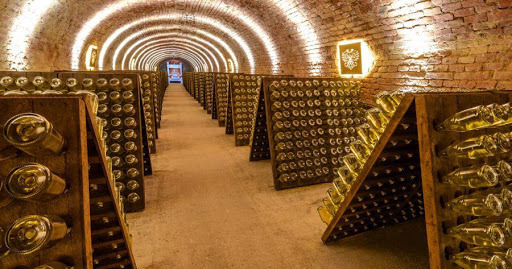
046 - DICCIONARIO DE ENOLOGÍA.
BODEGAS BERBERANA. Productor de la Rioja, España, fundada en 1877 en la actualidad su sede es un edificio de 40,000 m2 en tres plantas construido en 1971. Se nutre de un gran viñedo y posee 30,000 barricas de roble. Sus marcas principales son: Carta de Oro (blanco, tinto, rosado), Carta de Plata (blanco, tinto, rosado), Preferido (blanco, tinto, rosado) y Berberana (blanco, tinto, rosado).
BODEGAS BERCEO. Productor de la Rioja, España, fundada en 1872, la bodega tiene calados del Medievo y está declarada dentro del conjunto histórico-artístico de la ciudad de Haro. Es una de las más antiguas de Rioja y la única vertical que queda. Posee 48 ha de viñedo y cerca de 4,000 barricas de roble.
BODEGAS BERNARDO ÁLVAREZ. Bodega Española, ubicada en Castilla y León, Bierzo. Fue fundada en 1920, produce vinos blancos de las variedades Godello y Doña Blanca, y tinto de Mencía, vendidos con las etiquetas Viña Migarrón.
BODEGAS BILBAÍNAS. Productor de la Rioja, España, fundada en 1901, posee 255 ha de viñas y se asienta en un edificio de piedra de sillería del siglo pasado con más de 1,000 m lineales de calados. Sus marcas más destacadas son: Brillante (blanco, rosado), Cepa de Oro (blanco), Viña Paceta (blanco), Ederra (tinto), Gran Zaco (tinto), Imperator (tinto), Viña Pomal (tinto) y Viña Zaco.
BODEGAS CAMPO BURGO. Productor de la Rioja, España, fundada en 1889, los edificios datan de principios de siglo, con paredes de adobe y argamasa, y techos de madera. Situada en la ciudad de Alfaro posee 20 ha de viñedo propio y un parque de 7,000 barricas de roble. Sus principales marcas son Campo Burgo (blanco, rosado y tinto) y Alex Reserva Familiar (tinto).
BODEGAS CAMPO VIEJO. Productor de la Rioja, España, fundada en 1963, es la mayor empresa de Rioja y pertenece al gigante Bodegas y Bebidas. Su viñedo de 500 ha le provee la mayor parte de su materia prima. Sus más destacadas marcas son: Albor (tinto, blanco), Campo Viejo (blanco, rosado, tinto), San Asensio (blanco, rosado, tinto), Selección José Bezares (blanco, rosado, tinto), Marqués de Villamagna (tinto) y Viña Alcorta (tinto).
BODEGAS CORRAL. Productor de la Rioja, España, fundada en 1898, la construcción actual es de 1974, año en que se trasladó la antigua bodega. Ubicada en pleno Camino de Santiago, junto a las ruinas del antiguo hospital y albergue de San Juan de Arce, posee unas 50 ha de viñedo, comercializa cerca de un millón de botellas al año y dispone de 5,000 barricas de roble.
BODEGAS DE CRIANZA DE CASTILLA LA VIEJA. Bodega Española, ubicada en Castilla y León. Vinifica la uva que compra y la de sus 26 ha de viñedo propio. Produce vinos blancos bajo la marca Bornos (100% sauvignon blanc), Palacio de Bornos (100% verdejo de fermentación en barrica) y Palacio de Bornos Rueda Superior.
BODEGAS DE LA REAL DIVISA. Productor de la Rioja, España, fundada en 1968. Considerada como una de las construcciones más antiguas de Europa, pues su fachada principal es del siglo XII. Sobre su puerta tiene la "Jarra de Azucenas" de la Casa Real de Navarra. Tiene 40 ha de viñedo y un parque de 1,000 barricas de roble.
BODEGAS DOMECQ. Productor de la Rioja, España, derivación de la famosa casa de Jerez, fundada en 1973. Con 500 ha en la Rioja Alavesa, es uno de los mayores propietarios de esta denominación. Produce casi 6 millones de botellas. Sus vinos son famosos y sabrosos. Las marcas más destacadas son: Marqués de Arienzo (tinto) y Viña Eguía (tinto).
BODEGAS FARIÑA. Bodega Española, ubicada en Castilla y León, Toro. Fue fundada en 1941, se elaboran vinos con crianza y sin crianza, asimismo, una excelente colección de tintos monovarietales de tempranillo, cabernet sauvignon y merlot, así como un tinto dulce natural, el Val de Reyes. Sus más destacadas marcas son el Colegiata (tinto) y Gran Colegiata (tinto).
BODEGAS FAUSTINO MARTÍNEZ. Productor de la Rioja, España, perteneciente a los mismos dueños de las Bodegas Campillo y ya existía en 1860, época en que la Rioja se elaboraba según el "método rural". En la actualidad el grupo tiene un viñedo de 500 ha y un total de 25,000 barricas de roble. Sus marcas más destacadas son: Faustino V (blanco, rosado, tinto) y Faustino I (tinto).
BODEGAS FEDERICO PATERNINA. Productor de la Rioja, España. Sus cavas de añejamiento y crianza, algunas construidas en roca viva a más de 40 metros de profundidad, datan de principios del siglo XVII y contienen cerca de 40,000 barricas de roble. Sus marcas más destacadas son: Banda Dorada (blanco), Federico Paternina (blanco tinto), Banda Roja (rosado), Banda azul ( tinto), Conde los Andes (tinto) y Viña Vial (tinto).
BODEGAS FRANCO-ESPAÑOLAS. Productor de la Rioja, España, fundada en 1890, de marcado estilo francés. Aparte de ser una histórica de Rioja por su fundación, ha sido frecuentada por la realeza española (Alfonso XII y XIII). Sus marcas más destacadas son: Castil Corvo (blanco), Diamante semiseco (blanco), Viña Soledad (blanco), Rosado de Lujo, Excelso (tinto) y Rioja Bordón (tinto).
BODEGAS FRUTOS VILLAR. Bodega Española, ubicada en Castilla y León. Fue fundada en 1920, produce una amplia gama de vinos tintos a base de tempranillo, que vende con la etiqueta Muruve y Gran Muruve. [email protected]
5 notes
·
View notes
Text
After a long gap, the leading global spirits company Pernod-Ricard has decided to expand it’s imported wine portfolio in India. The company recently introduced Campo Viejo, the no 1 wine brand from Rioja, Spain.
A multi-award winning and sustainable winery, Campo Viejo has a love and respect for the land and its winemaking heritage. Committed to environmentally friendly winemaking practices, Campo Viejo was the first Spanish winery and one of the first wineries in the world to be certified Carbon Neutral.
Speaking about the launch, Jagbir Sidhu, Vice President, Marketing, Pernod Ricard India, said, “We are proud to present Campo Viejo, as the latest addition to our portfolio of wines in India. India is an emerging wine market and there is a huge opportunity to grow. Campo Viejo is the No.1 Rioja wine globally and No. 1 Rioja wine in the UK, Canada, and Germany etc. In the UK, it is also the No.1 Spanish wine. We want to make sure we have a big footprint in India with the right brands and believe that Campo Viejo will play an important role in this ambition. This as an exciting phase for us and we are confident that not only will Campo enhance our connection with the fun loving, experimenting, modern yet evolved Indian consumers, but will also set a new benchmark in the wine category in India.”
The launch event offered a unique experience as Campo Viejo brought on board the versatile and vibrant artist Bahaar Dhawan Rohatgi to bring alive the philosophy of ‘Live Uncorked’ who in turn designed the bar as an art piece.
Federico Lleonart, Global Brand Ambassador, Campo Viejo, added, “At Campo Viejo, we express ourselves through our wines in the same way an artist expresses themselves through their work. Winemaking is truly an art form; both artist and winemaker start with a blank canvas and through extensive craftsmanship, experimentation and dedication, masterpieces are created. It was great to see art and winemaking come together before us and what better way to celebrate the start of something new but through bringing alive this idea!”The two variants of Campo Viejo will be available in India –
The two variants of Campo Viejo will be available in India – Campo Viejo Tempranillo, the best expression of the Rioja Tempranillo and Campo Viejo Blanco, which is a blend of Tempranillo and Viura grapes.The wines will be available across 5 Star Hotels, premium restaurants & liquor stores in Delhi, Mumbai, and Bangalore and priced at around Rs.2000.
The wines will be available across 5 Star Hotels, premium restaurants & liquor stores in Delhi, Mumbai, and Bangalore and are priced at around Rs.2000 in the Mumbai market.
Pernod Ricard India Introduces Campo Viejo After a long gap, the leading global spirits company Pernod-Ricard has decided to expand it's imported wine portfolio in India.
0 notes
Photo
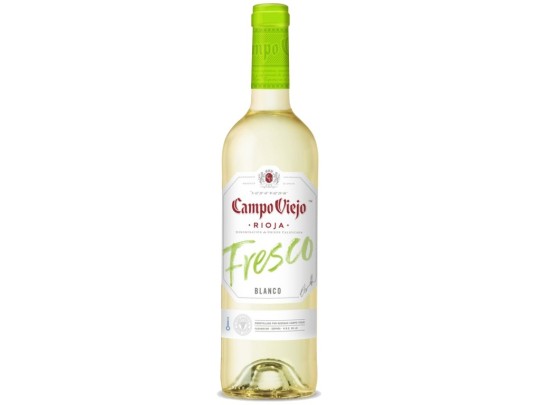
LAATSTE DAGEN PROMOTIES: Vino Rioja Joven Blanco Campo Viejo 750ml Klik hier om het product te bestellen https://ift.tt/38SR89c
0 notes
Photo
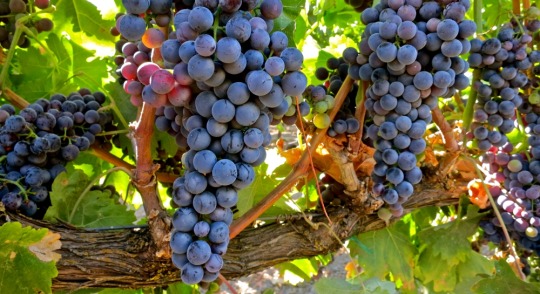
061 – DICCIONARIO DE ENOLOGÍA.
CALLET. Variedad de uva tinta autóctona de Mallorca, vigorosa, de sarmientos largos, hojas grandes, racimos compactos y grano grueso. Se complementa muy bien con la variedad Manto Negro. La encontramos en la DO. Binissalem.
CAMARET. Uva tinta de origen portugués, de buen rendimiento.
CAMBON-LA-PELOUSE. Vino tinto francés procedente de Médoc.
CAMENSAC. Vino tinto francés procedente de Médoc.
CAMPANIA. Región vitivinícola italiana donde se producen muy buenos vinos tintos con las cepas Agliánico, Barbera y Greco. Sus vinos más conocidos son el Falerno, el Greco di Tuffo, el muy famoso Lacrima Christi y el Ravello. Ficha 1.
CAMPANIA. Vino italiano Lácrima Christi caracterizado seco, tinto y blanco. Ficha 2.
CAMPEADOR. Vino tinto de la denominación de origen Rioja que pertenece a la bodega Martínez Lacuesta Hnos. Sdad. Ltda.
CAMPEROS. Vino blanco francés procedente de Barsac.
CAMPIGLIONE. Vino tinto italiano de la región del Piamonte.
CAMPILLO RESERVA ESPECIAL. Vino tinta reserva español, producido con cepas Tempranillo, Graciano y otras. D.O. Ca. Rioja (País Vasco). Elaborado por Campillo. Laguardia (Alava). Un vino amable y delicado, con buen ensamblaje de aromas que oscilan entre la fruta madura y los toques balsámicos, y que, en boca, resulta seco, bien estructurado, con una viva acidez y abundantes taninos. Su fase gustativa resulta sutil, con esa notable delicadeza que hemos destacado, llena de matices. Cierra con un final largo y que continúa la complejidad y la sutileza.
CAMPIPANO. Vino blanco de Cerdeña.
CAMPO DE BORJA. Zona vitivinícola situada al oeste de la provincia de Zaragoza, en España, en el valle del Ebro donde siembran Garnacha, Macabeo, Tempranillo, Mazuela y Cabernet Sauvignon. Producen muy buenos vinos tintos jóvenes y de crianza. D.O. de vinos aragoneses, con un contenido de 13 a 18 grados de alcohol, elaborados en la zona media entre el valle del Ebro y las estribaciones del Sistema Ibérico, utilizando la variedad de uva “garnacha”. La crianza es por el sistema de añada en envases de madera de roble, con una duración mínima de un año.
CAMPO VIEJO. Vino blanco, rosado y tinto, de la denominación de origen Rioja que pertenece a la bodega Bodegas Campo Viejo, de la Bodega Savin S.A.
CAMPONAC. Vino tinto francés procedente de Graves.
CAN FEIXES. Productor de Cataluña, España, fundada en 1945. Se dedican a la elaboración de tres tipos de cava, brut, brut nature y vintage, todos con larga crianza, clasificados como grandes reservas y con más de dos años en rima. Se vende bajo la marca Huguet. Ficha 1.
CAN FEIXES. Productor de Cataluña, Penedès, España. La hacienda vitícola con el nombre de Jaume Feixes, su fundador, data del año 1400 y sus elaboraciones se iniciaron en 1690. Esta finca, de poder de la familia de José M.a Huget Masgrau, está situada en las tierras altas de Mediona y Cabrera. Sus viñedos se escalonan en terrazas, donde la composición del suelo y la climatología se unen para poder cultivar, idóneamente, las variedades de uva de la zona y conseguir vinos de muy buena calidad y finura. Produce vinos blancos, rosados, tintos y espumosos, que se venden con la marca Can Feixes. Ficha 2.
CAN RÀFOLS DELS CAUS. Productor de Cataluña, Penedès, España, fundada en 1980. La empresa sitúa su actividad en una antigua masía de Avinyonet del Penedès. Su propietario confía en el excelente comportamiento de algunas variedades de origen francés para la concepción de sus vinos, siempre cambiantes y al estilo y capricho de su autor. Su apuesta más fuerte recae en su vino de reserva, Caus Lubis; un tinto elaborado con la variedad merlot y lleno de sensaciones.
CANADÁ. Tiene aproximadamente 7,000 hectáreas sembradas que producen unos 400,000 hectolitros de vinos. Su consumo por persona en un año es de 8,5 litros; las principales variedades que se siembran son Cabernet Sauvignon, Chenin, Gewurztraminer, Pinot Blanc, Riesling, Sauvignon Blanc y Gamay. Canadá tiene algunas zonas con microclimas favorables para la producción de buenos vinos; las dos principales son la provincia de Ontario y la otra la Columbia Británica.
CANAIOLO. Uva menor cultivada en la región de Toscana, Italia del norte. El vino tinto a partir de estas uvas es frecuentemente utilizado para cortes con Sangiovese Grosso en parte de los Chianti entre una variedad de vinos tintos.
CANALS-CANALS. Vino cava de la denominación de origen vinos espumosos que pertenecen a la bodega Canals Olle, Miguel.
CANALS-MUNNÉ. Cava. Vino blanco español, producido con cepas Xarel-lo, Macabeo y Parellada en la región de Cataluña. Tiene como características un color: amarillo verdoso, aroma: limpio, fruta fresca, ahumados y notas cremosas, sabor: sabroso, amable, con final amargo, persistente, contenido alcohólico: 11,5 grados, maridaje: pescados y mariscos, paté, ahumados, aves, carnes, asados y charcutería.
CANARESE. Vino tinto italiano procedente del Piamonte.
CANASTILLA. Que sirve para sostener las botellas de vino en posición casi horizontal y ayuda al escanciar que los sedimentos no se agiten. Estéticamente lucen muy bien en la mesa. Ficha 1.
CANASTILLA. Cesta de mimbre, o de otros materiales, utilizada para mantener una botella en posición acostada para transportar y servir con el máximo cuidado el vino evitando remover los sedimentos. Ficha 2.
CANELA. Aroma frecuente en los vinos, y se debe a un compuesto químico de la serie cinnámica. [email protected] - enólogo.
1 note
·
View note